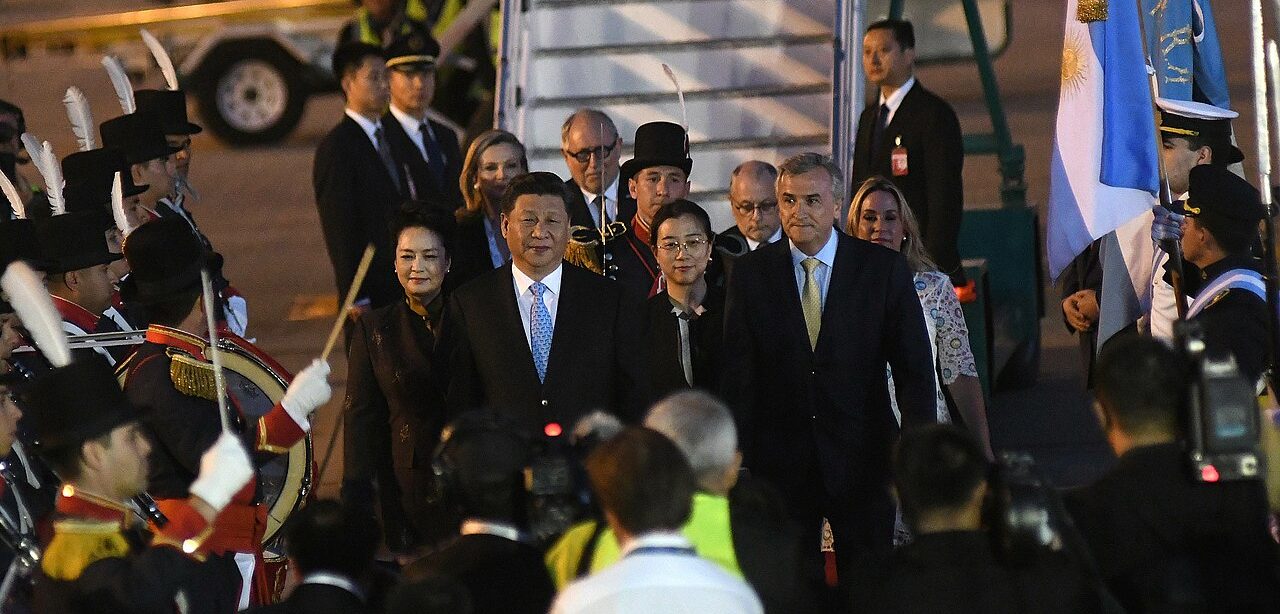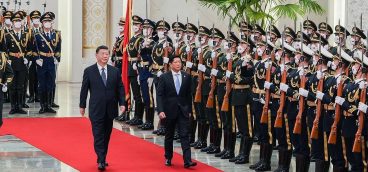Failing to Get Rich Before They Get Old

As we saw last week, President Xi understood (as observers in the West did not) that China’s growth model was exhausted and that the only known strategy for continued growth was to transition to a Western-style consumer-led economy. That had been the strategy used by other now-wealthy Asian societies.
But Xi knew more than that – he knew that China was very rapidly running out of time. Given China’s demographic time bomb, Xi recognized that the CCP had only a short runway for China to “get rich before it got old.” The demographic problem had been exacerbated, of course, by China’s own inhuman policymaking, specifically the ruinous one-child policy.
The 60-point reform agenda Xi promulgated in 2013 was designed to move China away from its capital-intensive model and toward a more modern model based on consumers. Xi undoubtedly hoped that the market reforms would kickstart China’s growth trajectory and allow China to get rich before it got old. But no sooner had the reform agenda been published than conservative elements in the CCP – which had always been dominant – rose up in opposition.
Consumer-driven societies require unfettered choice, both among consumers themselves and among the businesses competing to provide consumer products and services. Power would have to flow from the CCP to consumers, private industry, financial institutions, courts of law, and so on. But this kind of freedom of choice has always been anathema to the CCP, with the result that household consumption in China has stalled at 38% of GDP (versus 68% in the US).
Not only were the proposed reforms contrary to Communist economic and political theory, but China already had a catastrophic example of such reform before its eyes. In the late 1980s Mikhail Gorbachev had launched glasnost (“openness”) and perestroika (“restructuring”) in the Soviet Union in an attempt to jump start the country’s economic growth.
Whether or not those policies would have led to energized growth in the USSR nobody knows, because they led instead to the collapse of the entire Soviet Union. China wasn’t about to make the same mistake, and so the 60-point reforms were dead-on-arrival – nothing at all was ever heard about them again. In fact, only a few months later an internal Party memo, Document Number Nine, excoriated the very reforms Xi had proposed.
With liberalization off the table, Xi was stuck. There was no way – other than economic and political liberalization – to rekindle China’s growth, and with reform off-the-table it was clear that China was going to get old before it got rich. China would never catch up with the United States, either in aggregate GDP or – much less – per capita GDP.
The CCP was failing to keep its part of the devil’s bargain and it would only be a matter of time before the Chinese people understood what was happening. Xi therefore moved to the only other option – massive repression. If Xi couldn’t keep the Chinese people happy by providing rapid economic growth, he could at least avoid the collapse of the CCP – and a purge of Xi himself – by vastly ratcheting up the already oppressive machinery of the central government.
And ratchet it up he did. As the years of Xi’s rule went by he instituted ever-more draconian policies, ever-greater centralization of power, ever-greater control over the lives and minds of the people. From genocide in Xinjiang (and now Tibet) to the purge of all dissent in the CCP to suppression of private industry to an Orwellian oversight of the population, Xi has done his best to ensure that an unhappy populace will have no recourse.
Quite possibly the crown achievement of Xi-as-bad-emperor was his preposterous COVID policies. His bad behavior began when the Chinese tried to cover up the COVID outbreak, then stonewalled attempts to determine where the COVID virus had come from. To this day, astonishingly, we have no idea whether COVID passed to humans from an animal or whether it was man-made in a Chinese lab.
Could millions of deaths have been avoided if Xi and the CCP had behaved responsibly? We’ll never know, but Xi and his party have a lot to answer for.
Then, sneering at the West’s “weak” pandemic response, Xi shut China down hard, essentially sentencing the Chinese people to home confinement for three long years. Finally, with no notice or explanation, Xi suddenly ended his “zero-COVID” policy and reopened the country.
The Chinese people might not be able to throw the bums out, but they know how to show their displeasure and loss of confidence in Xi – they sit on their wallets and save even more than they were already doing. This lack of demand is already leading to a Japanese-like “balance sheet recession” from which it can be very difficult to recover.
As Robert Armstrong put it in the Financial Times, “[In China] what looked like a growing, liberalizing, outward-facing economy disappointed on all three fronts.”
We hear a lot – and we will hear more – about the “Japanification” of China – a difficult attempt to recover from a debt binge, characterized by a long period of deflation, economic stagnation, real estate busts, and general financial stress. But this characterization, negative as it is, is too rosy.
When the Japanese economy collapsed in 1990 the Japanese were 60% as wealthy as Americans on a per capita basis – Japan had gotten rich before it had gotten old. But China is only 20% as wealthy as Americans – as Xi feared, China has gotten old before the CCP could make it rich, and now it’s too late for the country.
Unless and until the Communist Party apparatus in China collapses and the inherent dynamism of the Chinse people can be unleashed, there is no way forward for China. It will never catch up to the US and as the years go by and Xi’s autocratic policies take further hold across Chinese society, the economic gap between China and the US will only grow.
Far from being viewed as a legitimate competitor to the US for global supremacy – a powerful pole more or less equal to the US – it will become clear that China is a stagnating, Soviet-style society suffocating under the bootheel of the CCP.
Next week we’ll take a look at the European Union.















